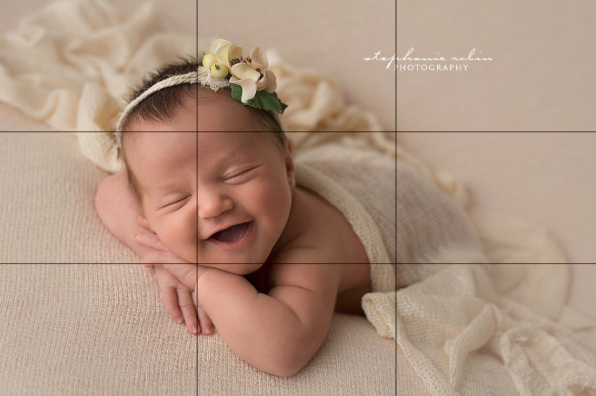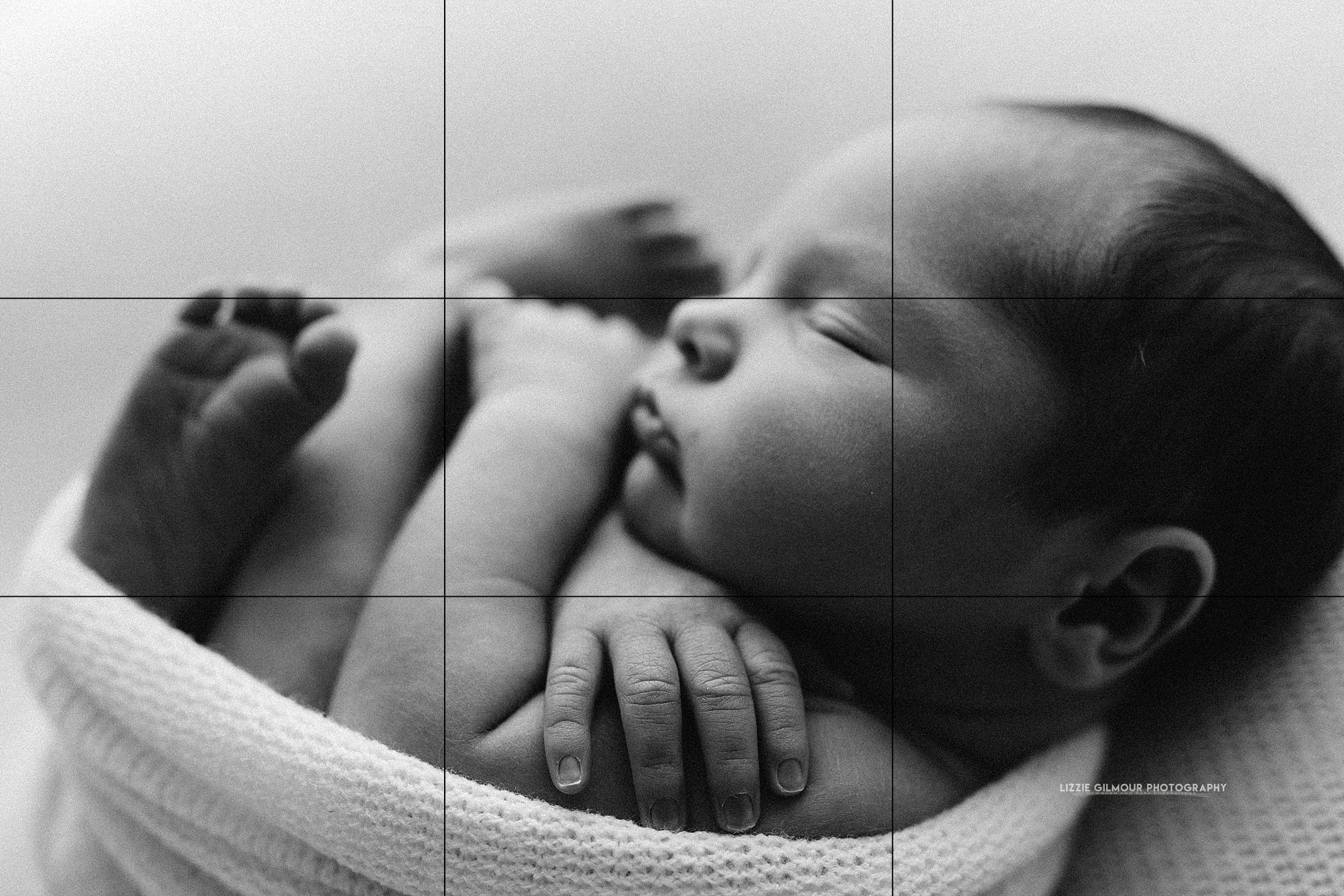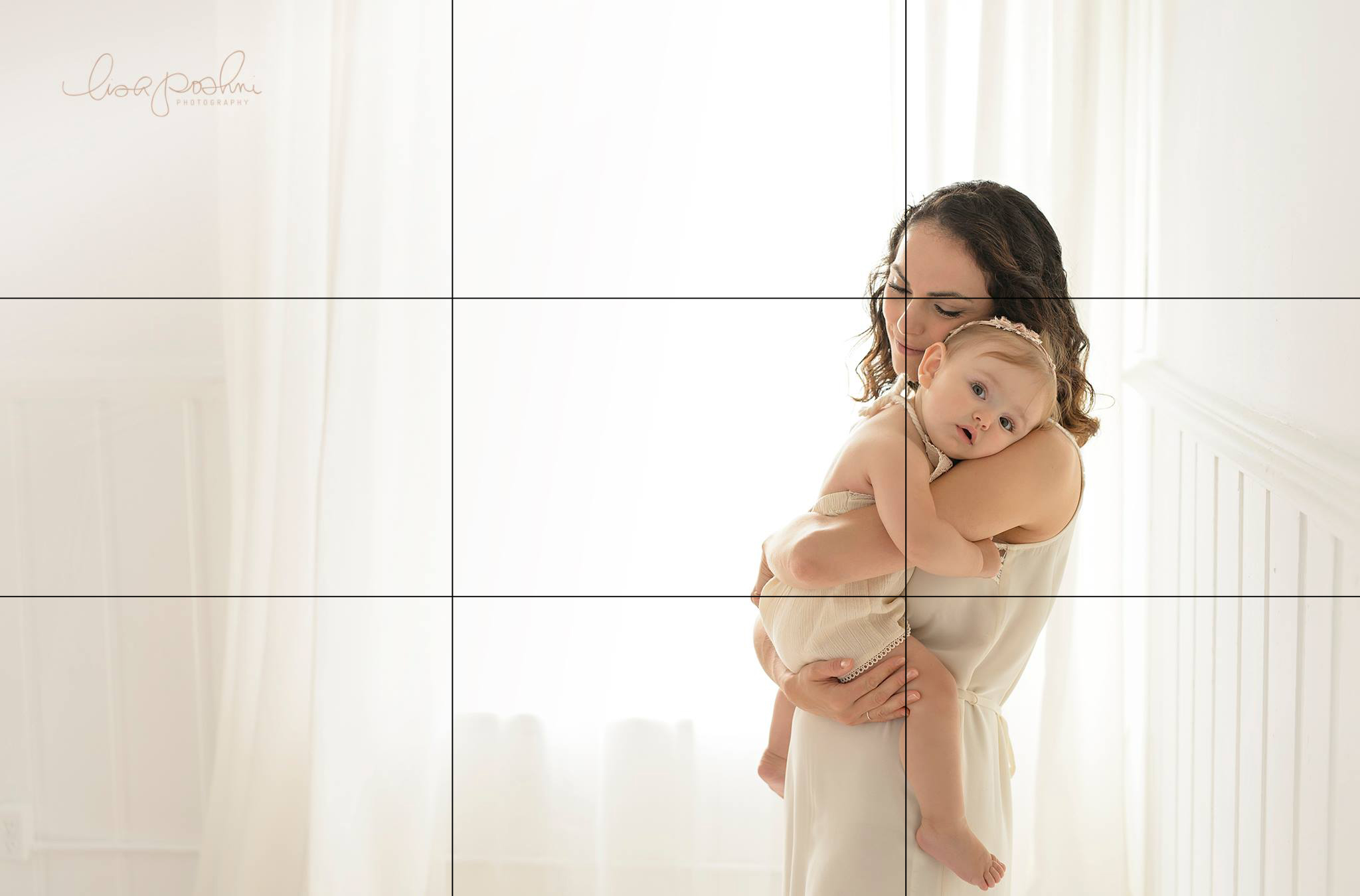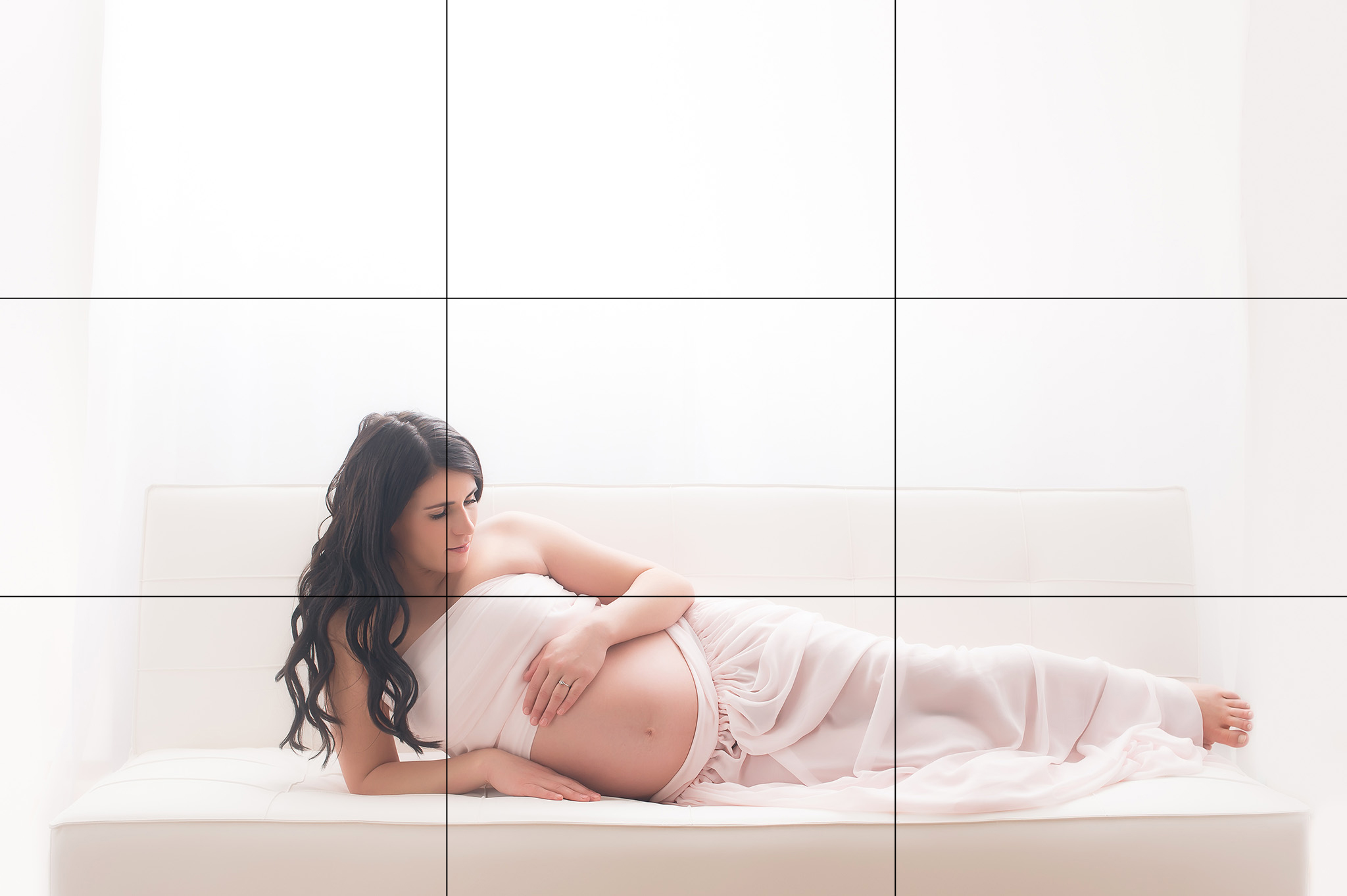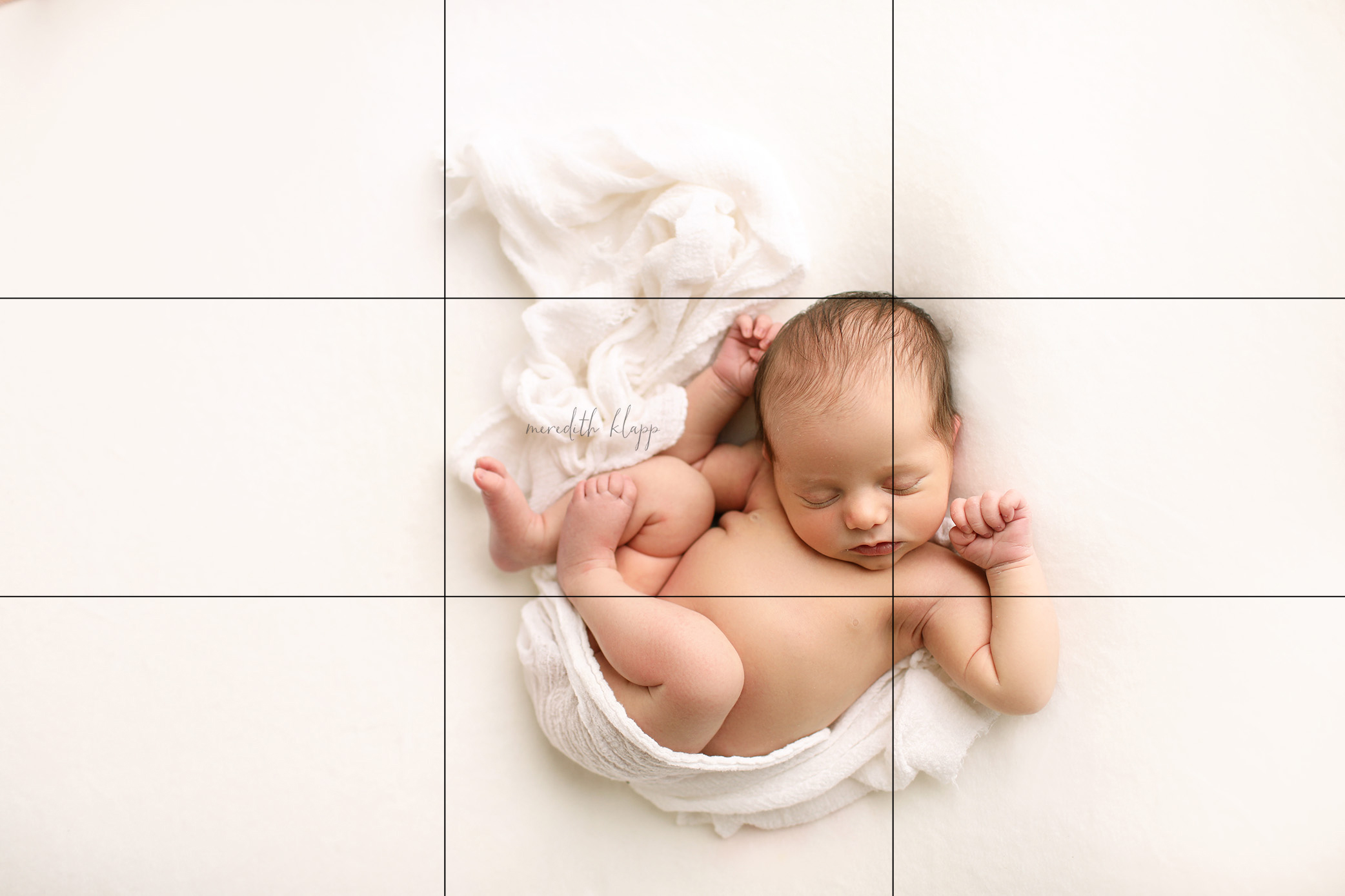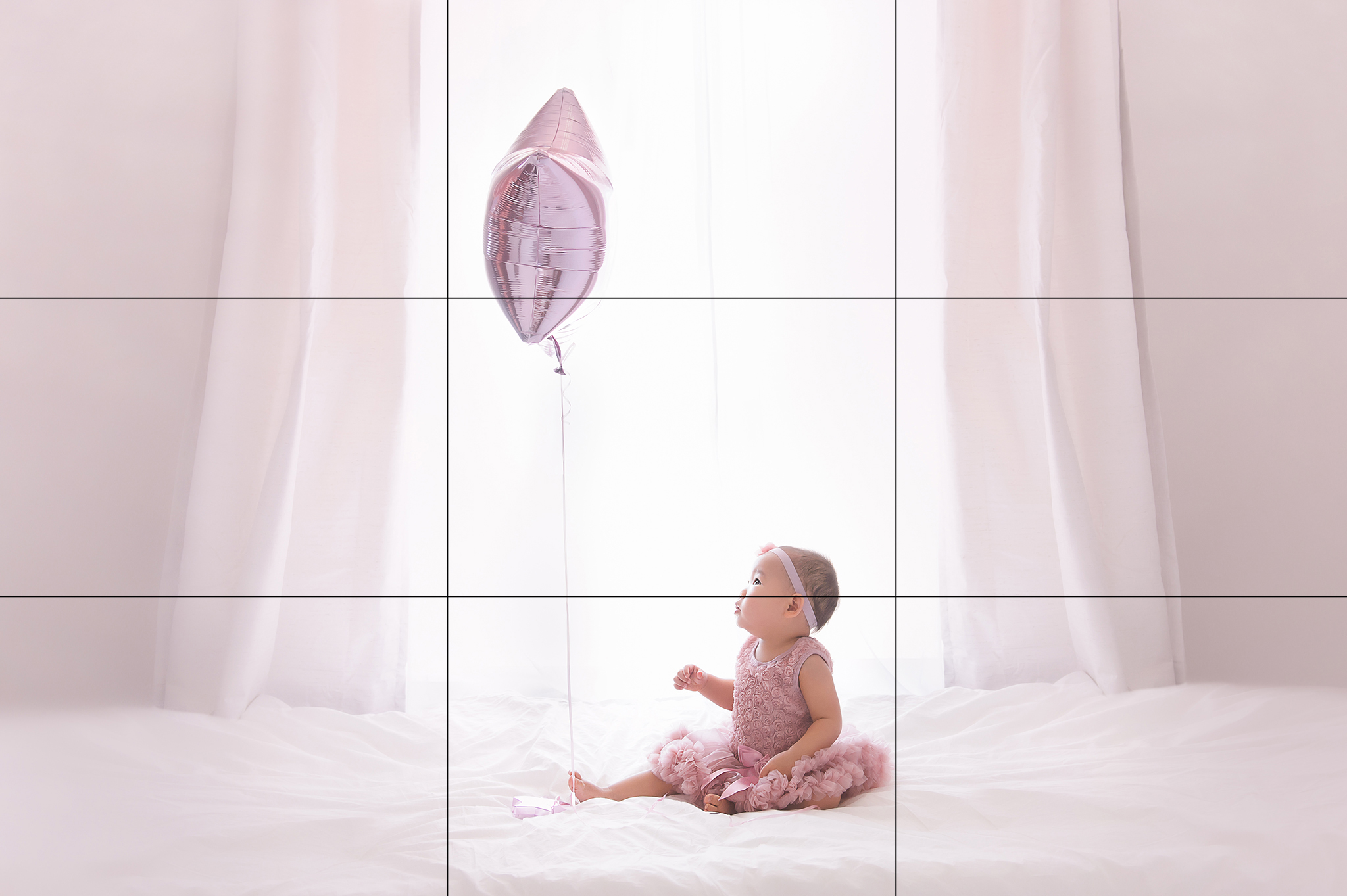Rule of Thirds (aka The Golden Rule)
It’s called the Golden Rule for a reason! Using the Rule of Thirds is the single most foundational and effective way to immediately improve your photography! There is plenty of info on this on the internet, but let’s take a look at what it really looks like when applied to Newborn Photography.
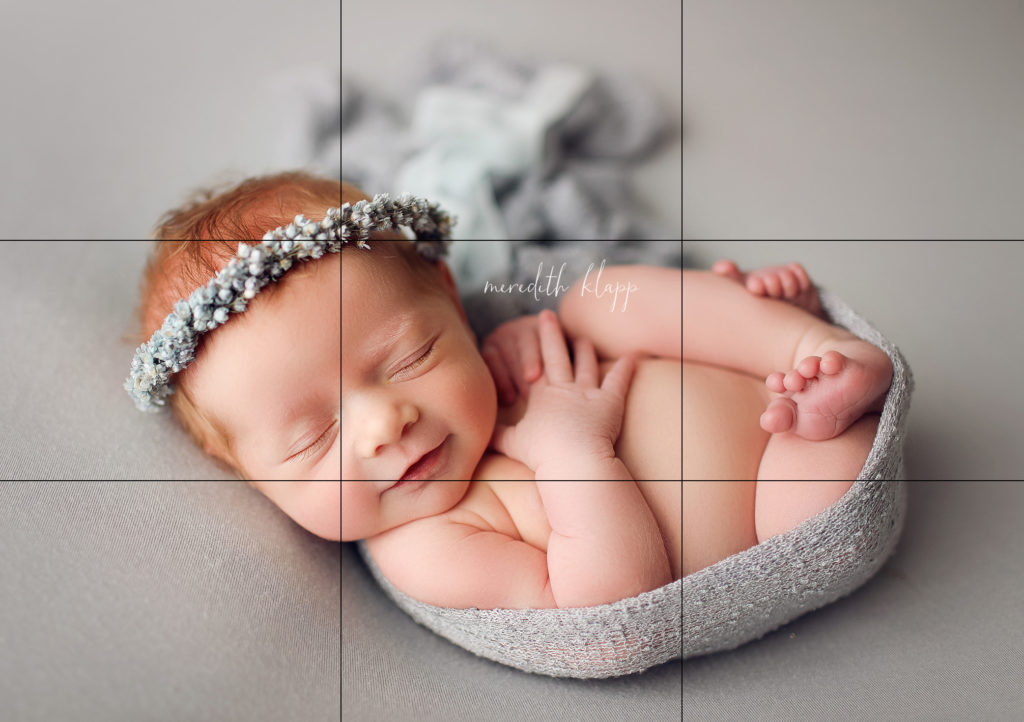
Image to the left by Meredith Klapp. Notice the third not only intersects baby’s face, but also runs along the corner of one eye. The lower third runs along the smile (an endearing feature in this image!), and also runs along the centre of baby’s body. The third near the top intersects the headband and contains the baby’s legs, while the embellished wrap in the background flows from the same line.
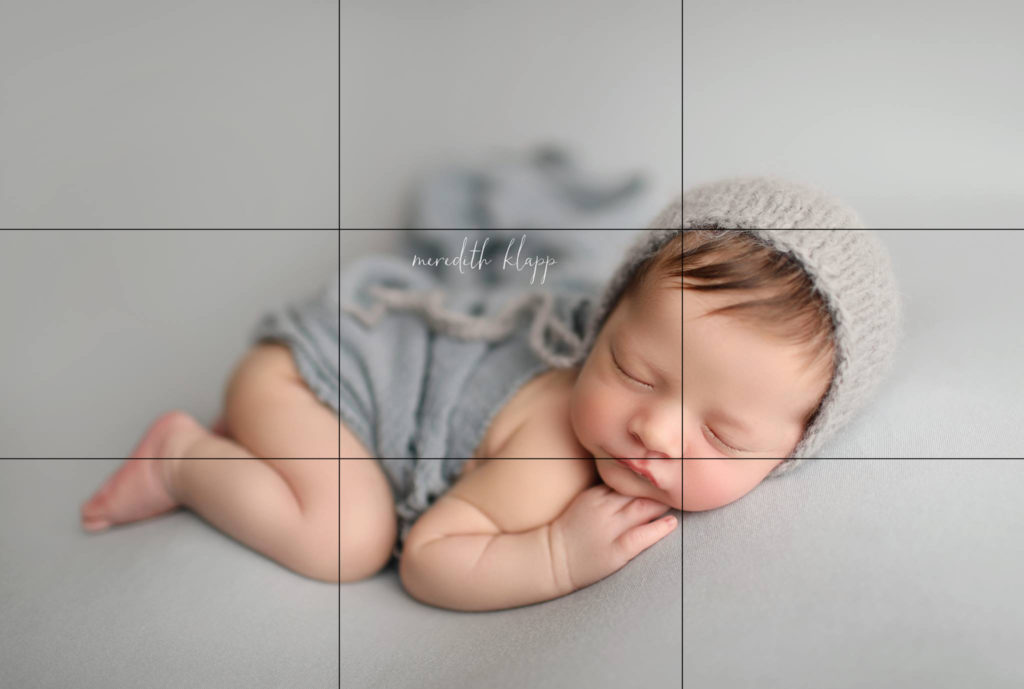
Image on the right also by Meredith Klapp. Both of these images are great examples of how the Rule of Thirds apply to an image where baby is essentially in the centre of the image.
Notice too how compositions that are anchored in the Golden Rule, actually create movement within the image. The eye is enticed to move around the image, but always coming back to its anchor within the thirds. See how this plays out in the next few images by Alexandra Behr, Stephanie Robin, and Lizzie Gilmour.

